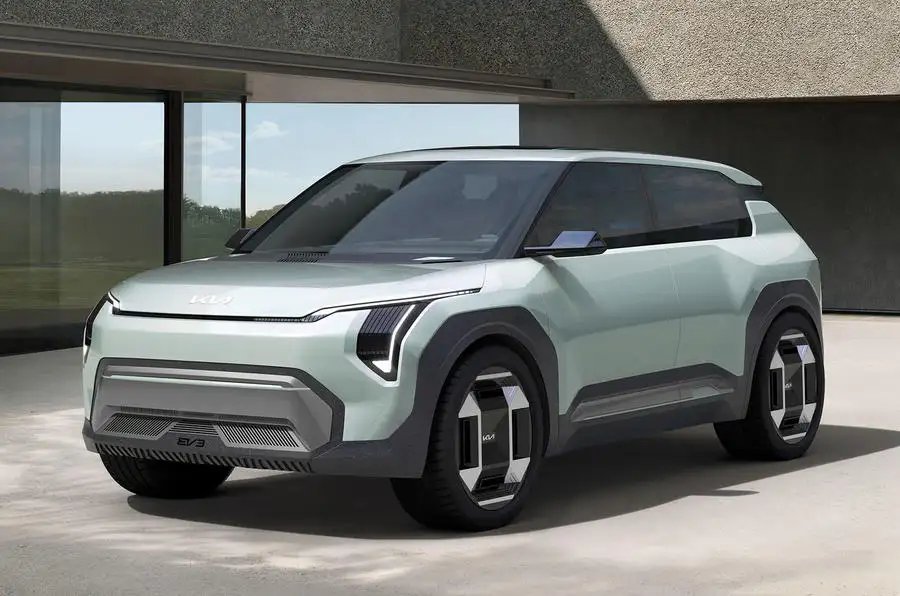2024 Kia EV3 is sub-£30k baby SUV to replace Soul EV

The Kia EV3 SUV will go on sale next year to kick-start a significant push into more affordable bespoke electric vehicles by the Korean firm, with pricing due to start from around £28,500.
The machine was revealed in concept form at the Korean firm’s inaugural EV Day, where it was displayed alongside the Concept EV4 and the larger EV5 SUV. But while the EV5 SUV was shown in production form, the EV3 will actually be the first to go on sale.
The Concept EV3 is a B-segment model and features boxy styling similar to the current Soul EV, in particular with its distinctive sloping roofline. Although the Soul EV is going out of production, Kia design boss Karim Habib insisted that “it was not really our intention” to directly reference that model. Indeed, while dimensions have not been given, the EV3 appears slightly larger than the Soul EV, in part because the bespoke electric platform allows for the wheels to be pushed right to the corners of the car.
The styling features clear family links to the larger EV5 and EV9 SUVs, although it gains a bespoke interpretation of Kia’s ‘Tiger face’ front, including a bold, lower frontal section and revamped LED headlights. The sharp lines and smooth body forms are intended to represent the firm’s ‘Opposites united’ design philosophy.
Habib said the focus for the design team with the model was on blending usability and flexibility, and the design features chunky wheel arch cladding and other popular SUV design cues. The front windscreen has been pushed forward and is relatively vertical to help maximise interior space.
While Habib confirmed that the exterior is “pretty close” to the production version, the interior is far more concept based: as with Kia’s other recent EV concepts, the rear doors open backwards, which, Habib said, was done to better showcase the interior.
The relatively minimalist interior features a display built around a single, long, horizontal touchscreen, which contains the driver display on the left and the infotainment and other controls in the middle. The steering wheel is a slightly unusual shape and now features the Kia logo offset to the right, another cue set to be adopted in future production cars.
The dashboard contains no real physical controls.
Between the front seats is a large table-like centre console that, Kia says, can be set in four different positions to optimise practicality. It is covered in mycelium, a fabric that is grown from cultivated mushroom roots and, when treated in a certain way, has leather-like qualities. While Kia is keen to expand the use of sustainable materials in the future, mycelium is not yet considered ready for full production.
The seats are also made from natural rather than carbonfibre structures. The bases of the rear seats can be folded completely upright to create a rear load area, which, Kia says, is suitable for carrying an e-bike or e-scooter. That storage area is located close to the EV3’s under-seat vehicle-to-load outlet plug, which would allow such machines to be charged while being transported.
The EV3 will use the Hyundai Motor Group’s E-GMP architecture, and while no technical details have been revealed, it is likely to offer multiple battery sizes and both single-motor front-drive and twin-motor all-wheel-drive powertrains. Based on the closely related EV5, outputs are likely to range from 215bhp to 302bhp for standard versions.
Notably, all of Kia’s bespoke EV models will eventually be offered with a range-topping GT version, which will undoubtedly offer more power along with further performance upgrades.
